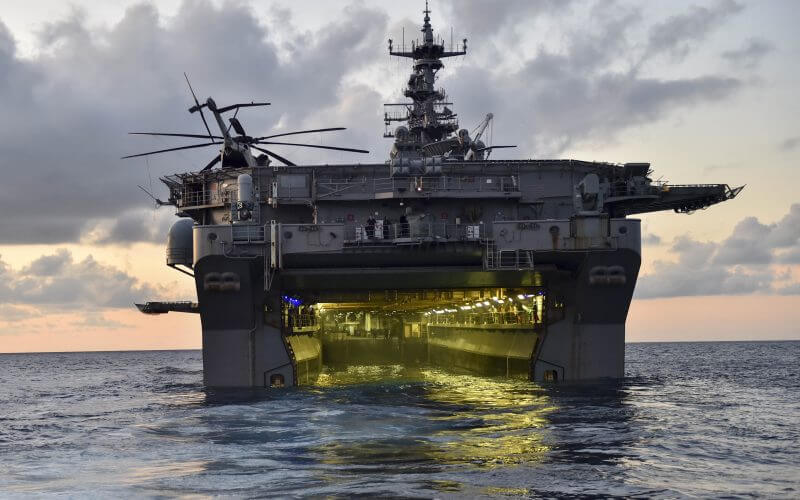Amid the various internal problems increasing in the United States Armed Forces, a new report from the Government Accountability Office (GAO) last week found that issues arising in the U.S. Navy with ships facing poor maintenance at a time when America's presence on the high seas continues to be challenged by China, Russia, Iran, and other rogue regimes.
According to officials, the inability of the U.S. Navy to keep ships alive and running has impacted other military branches, particularly the U.S. Marine Corps, which relies on armed ships to transport and place them near mission areas. The GAO found that while the Army and Marines have managed to maintain the readiness of their troops, the Navy has been on the decline, with different areas doing worse than others.
According to the report, U.S. officials found that in January of 2023, sustainment challenges "worsened from the fiscal year 2011 through 2021 for ten ship classes we reviewed."
Such challenges include maintenance delays, raided platforms, and breakdowns and failures of Naval vessels. In 2011, upkeep delays grew from an average of five days to 19 in 2021. Officials also say there has been a shortage of spare parts for the ships thanks to supply chain shortfalls, resulting in the resorting, reusing, or moving of equipment and parts from one vessel to another to maintain them.
From 2011 to 2021, officials said that amphibious assault vessels had serious parts that were inoperable, which are critical in transporting Marines to different areas around the world and engaging in missions, including disaster relief and civilian evacuations.
Last Friday, Marine Commandant General David Berger told House Armed Services Committee members that he had deep regrets that Marines were not available to help in several crises in past months in Turkey and Sudan, citing the lack of available Navy ships to position forces in nearby waters.
Officials say there have been tensions between the Pentagon and Capitol Hill over the future path for the Navy and Marines who rely on Naval vessels to fulfill their missions. In the recent budget proposals, the U.S. Navy has suggested it would drop its amphibious assault ship numbers below a 31-the hold by withdrawing older docked landing ships while freezing orders of the replacement San Antonio-class amphibious transport dock ships, which Marine Corps officials note would violate the law.
The GAO report concludes that the path forward for the U.S. Navy is challenging, noting that fixing ship and submarine maintenance delays, backlogs, and other problems "will be difficult given the poor condition of infrastructure at the Navy's four public shipyards."
Despite the U.S. Navy starting a 20-year, $21 billion effort to revitalize U.S. shipyards, the GAO report states that there have already been billions of dollars in cost overruns and tumbling deadlines by several years.
National security experts warn that such issues have repercussions for America's military presence in the South China Sea and the Persian Gulf, noting that the Communist Chinese government (CCP) and the Islamic Republic of Iran have increased their military aggression and upgraded their Naval technology.
Related Story: Iran Seizes Second Oil Tanker in a Week










